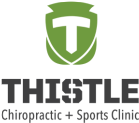Imagine you are driving through an intersection and someone runs a red light and T-bones your vehicle at 35 MPH, impacting it at the left front panel. Here is a snapshot of what happens in just the neck.
Lateral Whiplash
(Side-to-Side Motion)
Unlike typical rear-end collisions where the neck moves forward and backward, a T-bone accident can cause rapid side-to-side motion of the neck, especially if the head is not supported by the headrest or side airbag. This lateral whiplash can strain or tear muscles, tendons, and ligaments.
Shearing Forces
These forces occur when different parts of the body move in opposite directions. In a T-bone accident, the upper body may be restrained by the seatbelt while the head remains in motion. This can create shearing stress in the neck, potentially causing spinal injuries.
Compression Forces
If the neck is compressed during the impact (due to sudden vertical movement or a secondary collision), the vertebrae can be compressed, potentially leading to fractures, disc herniations, or spinal cord injury.
Rotational Forces
Depending on the angle of impact, the neck may twist or rotate sharply. This can cause injury to the cervical spine or strain to the muscles and ligaments that support the neck.

The initial trauma of an auto accident can be significant and if your injuries are not corrected quickly, the body will develop dysfunctional compensation patterns, which will then become your “new normal”. Remember, the body can fix itself in some ways but in many others, it just develops workaround patterns, which will eventually lead to chronic pain and dysfunction. The best thing you can do is get checked out by a qualified provider as soon as possible after an auto accident!

